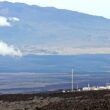Low-intensity geoengineering should be seriously considered
By Tom M. L. Wigley, May 21, 2008
My comments are restricted to the type of geoengineering that employs injecting aerosols or aerosol precursors into the stratosphere. This is the primary focus of Alan Robock’s article, wherein about half of his arguments against employing this type of geoengineering are related to possible detrimental environmental side effects. Our knowledge of these side effects is still rudimentary. He therefore endorses a “moderate investment in theoretical geoengineering research.” His emphasis on “theoretical” accords with his view that we shouldn’t undertake even small-scale stratospheric experiments until we know that “we could avoid . . . all of the potential consequences [presumably adverse] that we know about.”
Of course, complete avoidance may be impossible–more sensibly, this should be considered a relative risk problem, balancing the possible negative effects of geoengineering against the possibly larger negative effects if we don’t pursue geoengineering.
As others have pointed out, no serious scientists suggest deploying any geoengineering strategy now or in the immediate future–at least until we know more about the possible consequences. Nor has anyone suggested we employ geoengineering as a sole climate management strategy, circumventing emissions mitigation. Mitigation is essential, not least because a failure to mitigate would allow carbon dioxide to continue to accumulate in the atmosphere, resulting in further ocean acidification. The primary focus, per my recent Science article, “A Combined Mitigation/Geoengineering Approach to Climate Stabilization,” should be on employing geoengineering as a means to gain time to develop and implement cost-effective, carbon-neutral energy technologies that will move us away from our current overwhelming dependence on fossil fuels.
To assess the relative risks of geoengineering to the climate system and stratospheric ozone, we need coupled atmosphere-ocean general circulation models or atmospheric chemistry studies that employ realistic geoenginneering scenarios. No such studies have been published to date. Not only must the geoengineering scenario be realistic (i.e., modeled as part of a combined geoengineering/mitigation strategy), but the results of such a study must be compared with a realistic no-geoengineering scenario.
Possible scenarios for comparison given in my paper are stabilization of atmospheric carbon dioxide at 450 parts per million (ppm) by 2100 through mitigation only, and, as a complementary combined mitigation/geoengineering scenario, an overshoot concentration pathway where atmospheric carbon dioxide reaches 530 ppm before falling back to 450 ppm, coupled with low-intensity geoengineering. These scenarios are projected to have the same effect on global temperature rise–stabilization at about 2 degrees Celsius.
The low-intensity geoengineering case is defined as injecting sulfur dioxide into the stratosphere beginning in 2010, ramping up linearly to a peak of 5 teragrams of sulfur per year between 2040 and 2060, and then declining back to zero by 2090, for a total injection of 130 teragrams of sulfur over 80 years. The consequences of this scenario in terms of sulfur deposition at the Earth’s surface (i.e., what is commonly referred to as “acid rain”) are likely to be minimal: Globally, 130 teragrams of sulfur is only about two years’ worth of current emissions from fossil fuel burning. Optimizing aerosol size and location would require an even smaller injection rate into the stratosphere. Even medium- and high-intensity geoengineering scenarios would lead to relatively little additional surface sulfur deposition when compared to sulfur dioxide emissions scenarios from fossil fuel combustion projected by the Intergovernmental Panel on Climate Change. Likewise, the effect of stratospheric aerosol loading on cirrus clouds is likely to be minor, and the slow ramp-up would give people plenty of time to adapt to suggested changes in the blueness of the sky.
Of course, as Alan points out, regional differences in surface sulfur deposition are possible–the effects from geoengineering are likely to be larger in more pristine areas–and the patterns of deposition resulting from injecting aerosols into the stratosphere are likely to be different from those due to fossil-fuel burning. Further work is required to elucidate these flux patterns, but it’s highly unlikely that they would present a significant problem.
Indeed, I cannot see any scientific reason why the low-intensity geoengineering case could cause detrimental effects of a magnitude that would outweigh the positive effects of geoengineering, the key benefit being significantly more time to develop and deploy the carbon-neutral technologies needed for climate stabilization. Alan has a rosy view of our ability to develop these technologies in a timely fashion, which is at odds with many economists and energy experts. The hurdles are immense, not just politically, but also in terms of technology. (See “Dangerous Assumptions” and “Sustainable Developments: Keys to Climate Protection.”) Given the uncertainty of meeting the technological challenges, we should treat geoengineering as a real possibility and meet it head on at a funding level that will bring results and reduce uncertainties quickly.
Topics: Climate Change
Share: [addthis tool="addthis_inline_share_toolbox"]














